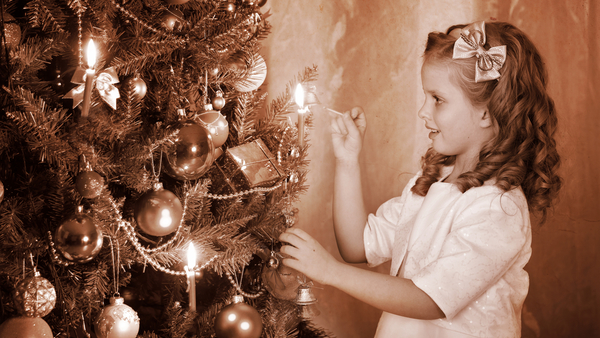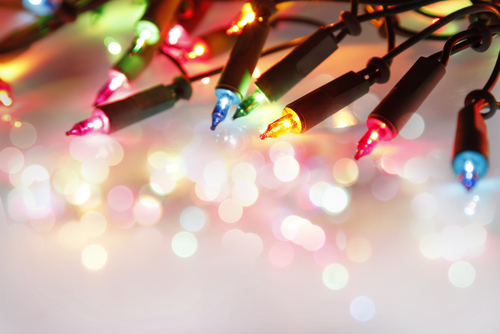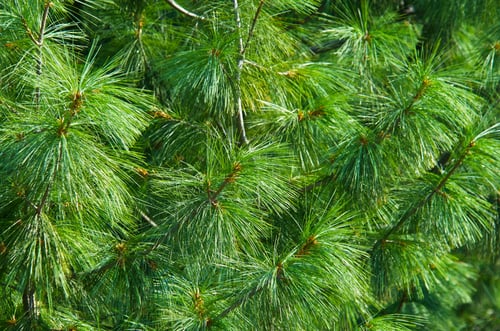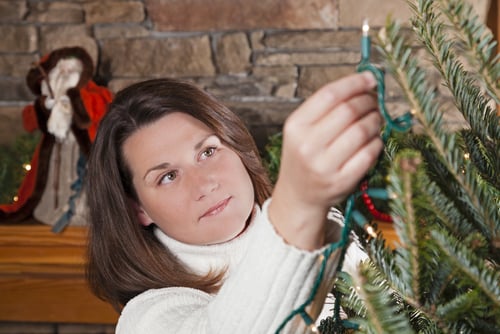
4 tips to avoid a Christmas tree fire
Dec 15, 2014 | By Caterina Pontoriero

The first Christmas trees were decorated with candles. Tiny fires lit all over a dry, dying tree? Talk about an insurance risk.
Not surprisingly, in the late 19th and early 20th centuries Christmas tree fires occured frequently in the U.S. Homes, churches, stores, and even a Chicago hospital in 1885 fell victim to Christmas tree fires. Fires happened so often that newspapers would report on the season’s first Christmas tree fire as casually as the first snow of the season, says Bloomberg View.
In 1895, Ralph E. Morris created stringed miniature electric lights with the intent of using them to more safely decorate Christmas trees. However, many Americans distrusted the safety of electric lights, and candles were still used to illuminate trees.
That’s why in December 1908, insurance companies attempted to create a law that would make it illegal to decorate a real Christmas tree with lit candles. According to Bloomberg View, the New York Board of Underwriters issued the following announcement to every client of every fire insurance firm in the city:
Your attention is hereby respectfully called to the fact that the introduction about the premises of Christmas green, harvest specimens and other inflammable materials, such as cotton, to represent snow, and the like, and the use of moving picture machines, introduces additional hazard not contemplated by the underwriters in issuing policies of indemnity covering the usual fire hazard.
 Electric Christmas lights were also added to the list of banned decorations the following year, as the early lightbulbs weren’t much safer than candles at that point. It wasn’t until the technology improved in the 1920s that reliable Christmas tree lighting was produced and mass marketed, says Bloomberg View.
Electric Christmas lights were also added to the list of banned decorations the following year, as the early lightbulbs weren’t much safer than candles at that point. It wasn’t until the technology improved in the 1920s that reliable Christmas tree lighting was produced and mass marketed, says Bloomberg View.
Yet even then, electric lights still caused a good number of fires. In one such incident, Bing Crosby’s North Hollywood mansion burned down after a string of Christmas lights short-circuited in 1943. Luckily for Crosby, most of the $200,000 loss was covered by insurance.
Which brings us to today. Christmas lights are a lot safer nowadays, right? Sure, but that doesn’t mean they are immune to fire risk.
According to the National Fire Protection Association (NFPA), from 2007 to 2011, U.S. fire departments responded to an estimated annual average of 230 home structure fires that were started by Christmas trees. One-third of Christmas tree structure fires were caused by electrical failures or malfunctions, and nearly 20% of these structure fires occurred because some type of heat source was too close to the tree.
Although these fires are not common, when they do occur they can be very serious. On average, one of every 40 reported home structure Christmas tree fires resulted in a death.
Click “next” to read some tips from the NFPA to protect your home from a Christmas tree fire:

Pick the right tree.
If your family prefers getting a real tree, make sure to get one with fresh, green needles that do not fall of when touched. Shedding needles mean your tree is drying out and is a fire hazard. A fresh tree in a stable stand that holds 1 quart of water per inch of the tree’s stem’s diameter. Cut one to two inches off the stem before placing the tree in the stand, and be sure to replace water daily.
If you are going for an artificial tree, make sure to check its label or with the manufacturer to verify that it is fire retardant.

Find the right spot.
When you put your tree up, keep it at least three feet away from heat sources, like fireplaces, radiators, candles, heat vents, or lights. Also, make sure your tree isn’t blocking any entrance or exit from the room or home.

Use the right decorations.
Never use candles to decorate the tree. It might seem like a sweet, old-timey look, but as we discussed, there’s a reason why we stopped using them!
When decorating your tree, use lights that have the label of an independent testing laboratory. Check strands of lights for any signs of damage or wear. Replace any with worn or broken cords, or loose bulb connectitons.
Only connect up to three strands of mini string sets to light your tree, or a maximum of 50 bulbs for screw-in bulbs. If using LED light,s read manufacturer’s instructions for the maximum recommended number of strands to connect.
Never run electrical cords from the tree through doorways or under carpets, and don’t overload electrical outlets. Unplug the tree before leaving the house or going to bed, and make sure to have at least one smoke detector and fire extinguisher in the house.

Dispose of your tree properly.
Get rid of your tree when it begins shedding needles. Check with your community to find a tree recycling program to properly dispose of the tree. Dried-out needles themselves are a fire hazard, so old trees should not be left in homes or garages, or placed outside against a home.
Categories: Blog
